Marble Gravitron
Recently, the Spangler Labs Research Team took a trip to an amusement park. (It wasn’t for fun, it was for work but it was fun.) […]
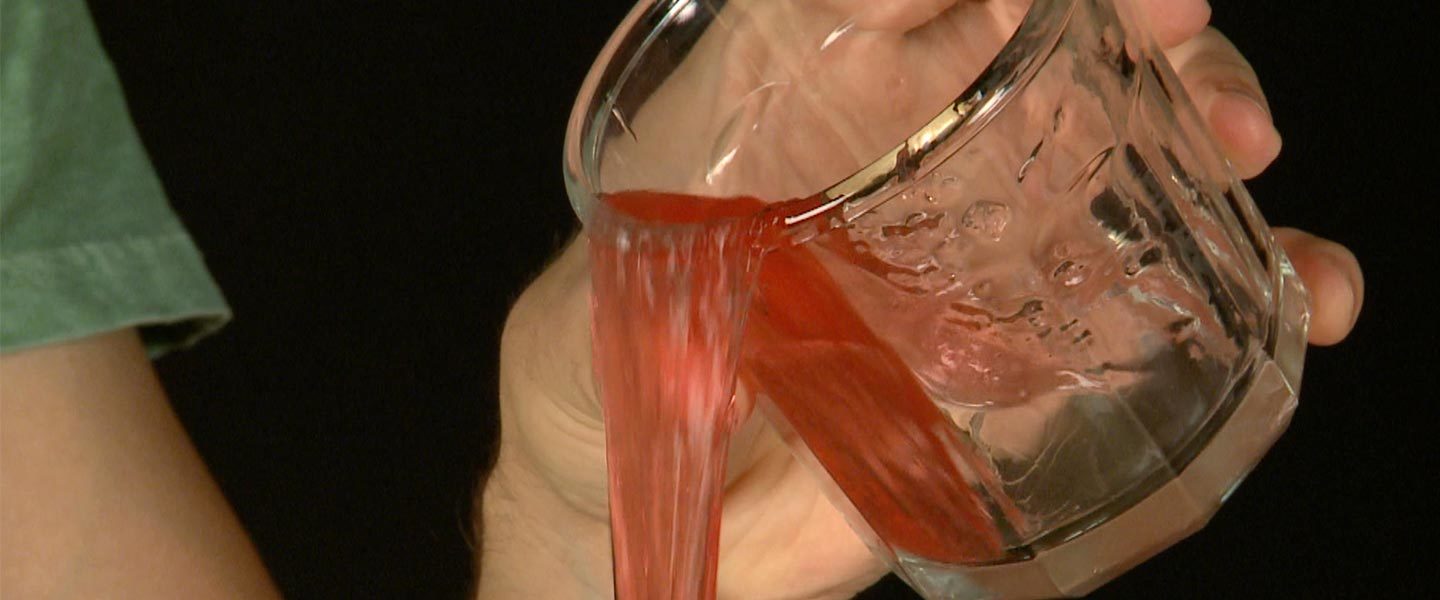
When a small amount of Polyox (polyethylene oxide) is mixed with water, it dissolves, forming a thick, slippery, gooey, mucous-like gel. Oh, the visual imagery! When the gel is poured back and forth between two beakers, the gel mysteriously siphons from the higher held beaker to the lower one. Maybe water can flow uphill. You have to play with the stuff to believe it.
As your Gravi-Goo begins to form, keep these things in mind…
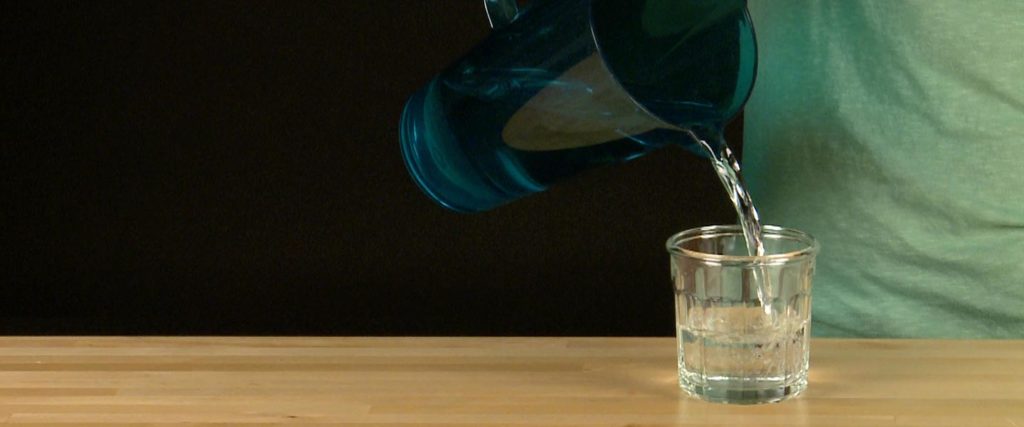
Fill one cup or beaker with 450 mL of room-temperature water.
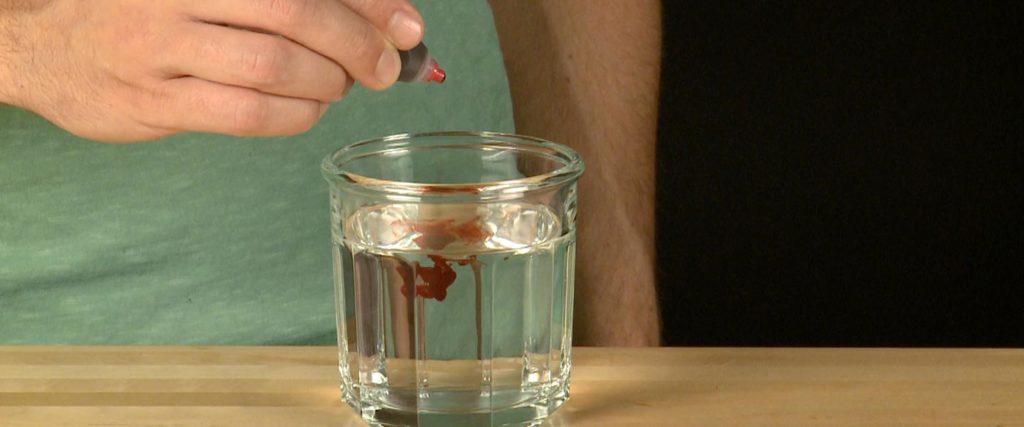
If you want to have colored Gravi-Goo, this is the time to add a few drops of food coloring to the water and stir it in.
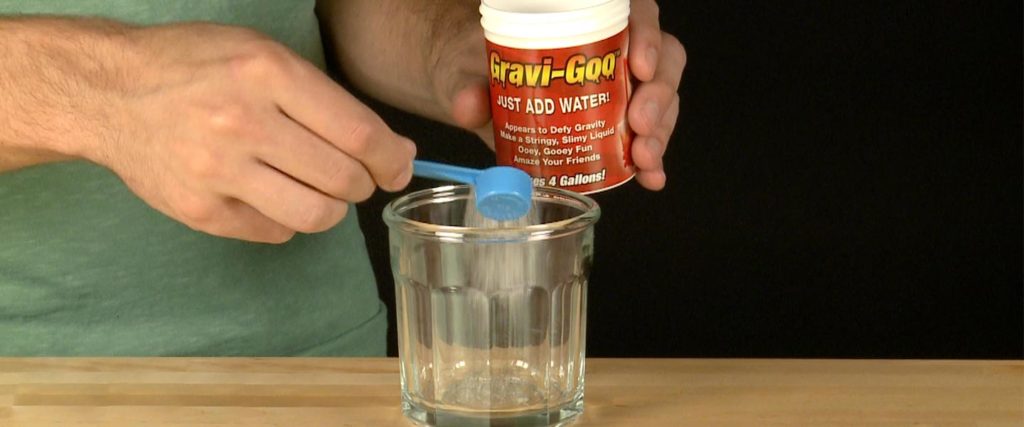
Fill the other cup or beaker with 1 blue scoop of Gravi-Goo powder.
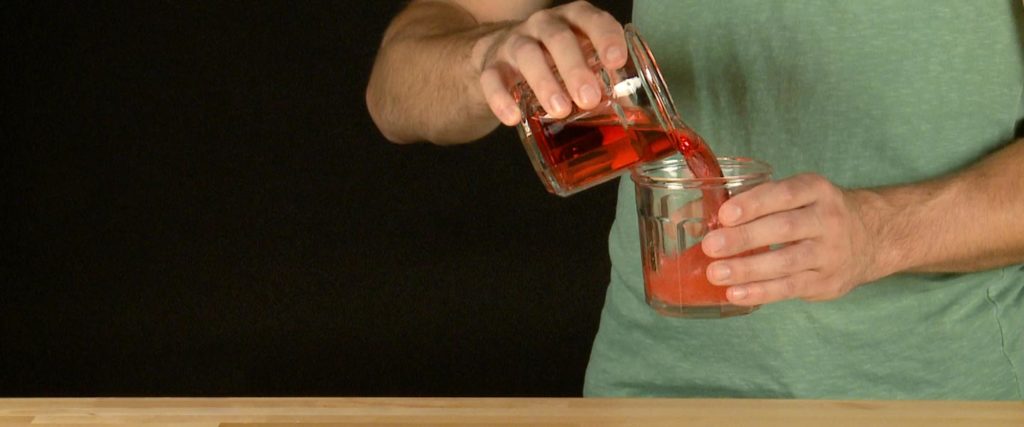
Now, quickly pour the water from its cup into the cup with the powder.
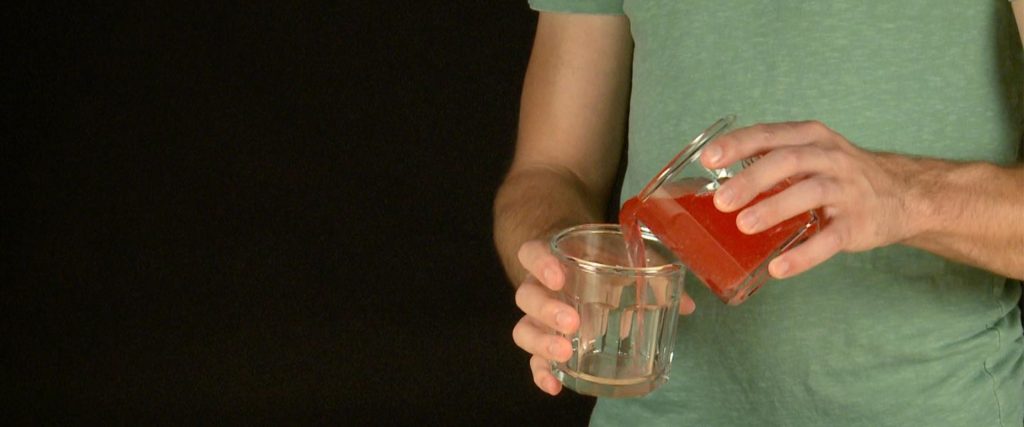
For the first 2-3 minutes you will need to carefully and quickly pour the liquid from cup to cup, in order to avoid any clumping. NOTE: If clumping occurs, or powder material is stuck to the bottom of a cup, gently stir the mixture to loosen the polymer. If clumps are still present after stirring, let the mixture sit for 24 hours to allow the lumps to dissolve completely.
After 2-3 minutes of pouring, the liquid should start to form “strings” of goo as you pour it back and forth.
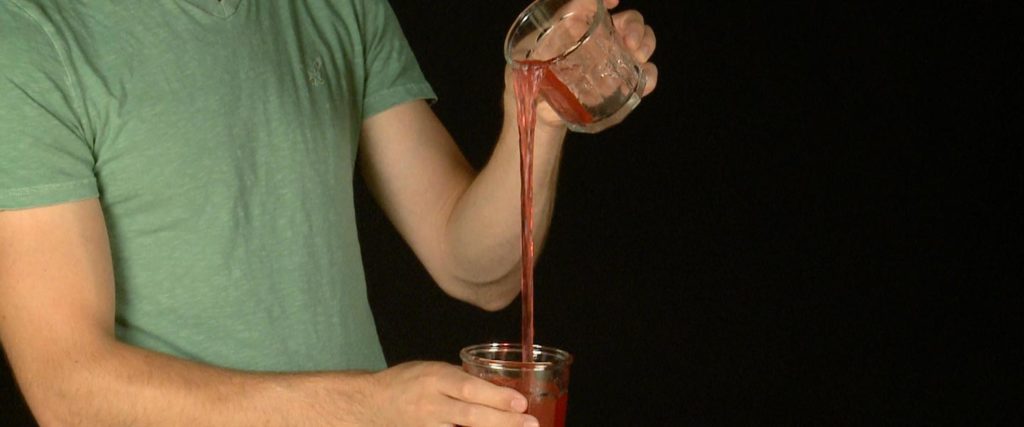
After the formation of the “strings,” slowly pour the liquid back and forth for an additional 5 minutes.
Now, the excitement has started to build, but you will need to be patient for 30-40 more minutes while the liquid sits. We know, it’s hard to wait, but trust us, the result will be worth it! NOTE: Make sure to let the liquid sit all in one cup. If it is separated between the two cups you will end up with two separate sets of Gravi-Goo.
After your concoction has settled for 30-40 minutes you are ready for the coolest anti-gravity experiment you’ve ever seen! Just start pouring the liquid between the two cups again…
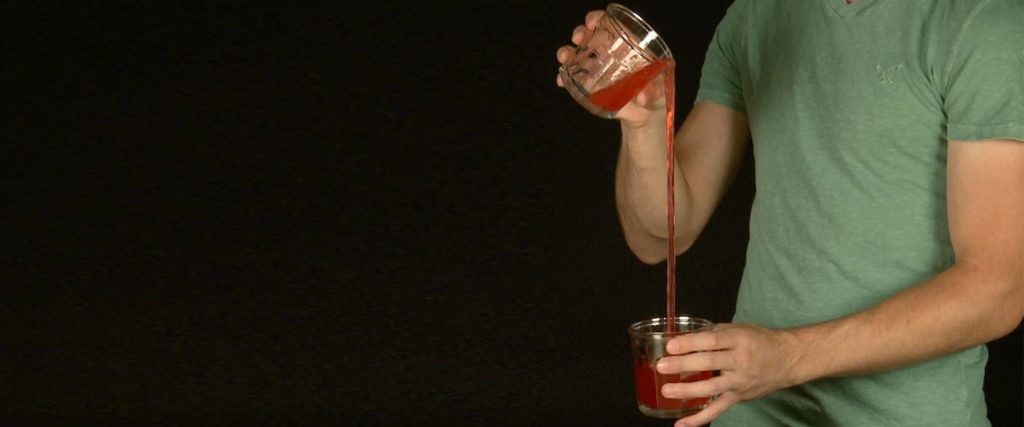
After just a few pours back and forth, you will start to notice a very strange occurrence. Once you start to pour the liquid you just can’t stop as the liquid crawls up and over the sides of the cup in a “self-siphoning” action. Make sure that you keep the cup you are pouring from higher than the cup you are pouring into.
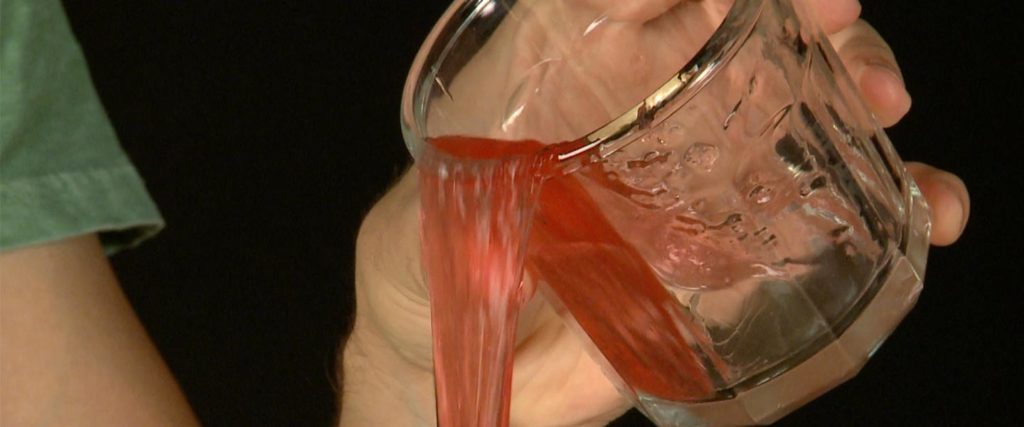
As the Gravi-Goo continues to flow, you will find that you hardly need to pour the liquid at all… it will climb up and out of the cup on its own!
When you are finished playing with your Gravi-Goo, dispose of it in a trashcan. Don’t pour it down the drain, unless you want some very strange occurrences in your plumbing!
WARNING: Don’t be surprised if you become so transfixed on the self-siphoning action of the polymer that you forget to line up the bottom beaker with the top beaker. In other words, you’re bound to miss the bottom beaker and your hands will be covered with goo. You’ll feel like the stand-in creature in the Alien movies. Don’t worry… it easily washes right off your skin, but clothes, fabric, and carpet are a little trickier. It is best to perform this experiment in the kitchen over a counter.
Specially formulated by Steve Spangler Science, Gravi-Goo is a unique type of polymer. When added to water, it acts both like a sponge to suck up the water and also links the molecules in a long chain. Gravi-Goo is a combination of polyacrylamide and acrylic co-polymers. Think of Gravi-Goo as a combination of Insta-Snow, which absorbs tons of water, and Slime which bonds into long chains of molecules. Now, please don’t go pour Insta-Snow into your Slime… it doesn’t work like that!
In order to illustrate the molecular structure of Gravi-Goo, it might be helpful to picture a bowl of spaghetti all tangled up. The spaghetti-like structure causes the polymer to thicken water and provides a strong elastic effect. Although extremely elastic, the Gravi-Goo remains fluid like pancake syrup. The straight chain format of the Gravi-Goo molecule with no side chains to attach to other molecule strands allows the chains to slide past each other and stay fluid.